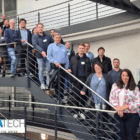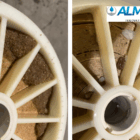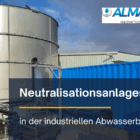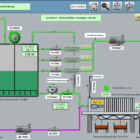Sludge stabilization refers to the process by which organic substances in sewage sludge are broken down or chemically treated as far as possible in order to minimize odour formation, putrefaction processes and pathogenic germs. The aim is to prepare the sludge for further treatment, storage, disposal or recycling. Effective stabilization increases the safety and efficiency of sludge treatment and contributes to compliance with legal requirements.
Table of contents
Importance of sludge stabilization
Minimization of odour and hygiene risks:
- Organic substances in the sludge decompose under anaerobic conditions and form odorous substances such as hydrogen sulphide (H₂S) or ammonia (NH₃). Stabilization reduces these processes and reduces the microbiological load.
Reduction of the organic content:
- Stabilization reduces the proportion of easily degradable organic substances, which reduces the amount of sludge for further processing.
Improving disposal options:
- Stabilized sludge is hygienized and meets the requirements for agricultural use or thermal disposal.
Increased safety during storage and transportation:
- Stabilized sludge is less susceptible to putrefaction processes and gas formation, which improves operational safety.
Sludge stabilization process
Sludge stabilization processes can be divided into biological, chemical and thermal processes. The choice of process depends on the composition of the sludge, the size of the plant and the recycling targets.
Biological sludge stabilization
Biological stabilization uses the activity of microorganisms to break down organic substances. Depending on the availability of oxygen, a distinction is made between aerobic and anaerobic processes.
a) Anaerobic stabilization
- Process description:
- In closed digestion towers, the sludge is broken down by anaerobic microorganisms in the absence of oxygen.
- The process takes place in several stages:
- Hydrolysis: Splitting of complex organic molecules (e.g. proteins, fats) into simpler compounds.
- Acidogenesis: formation of volatile fatty acids (e.g. acetic acid) and gases (CO₂, H₂).
- Methanogenesis: Conversion of fatty acids into methane (CH₄) and carbon dioxide (CO₂).
- Goals and benefits:
- Reduction of the organic content by 40-60 %.
- Production of biogas (methane), which can be used to generate energy.
- Application:
- Particularly suitable for larger sewage treatment plants or plants with high sludge loads.
- Challenges:
- High space requirement and investment costs.
- Sensitivity to temperature fluctuations.
b) Aerobic stabilization
- Process description:
- The sludge is supplied with oxygen in aeration tanks, allowing microorganisms to break down the organic matter.
- Advantages:
- Simple operation and lower investment costs compared to anaerobic stabilization.
- Disadvantages:
- High energy requirement for ventilation.
- No energy gain through biogas production.
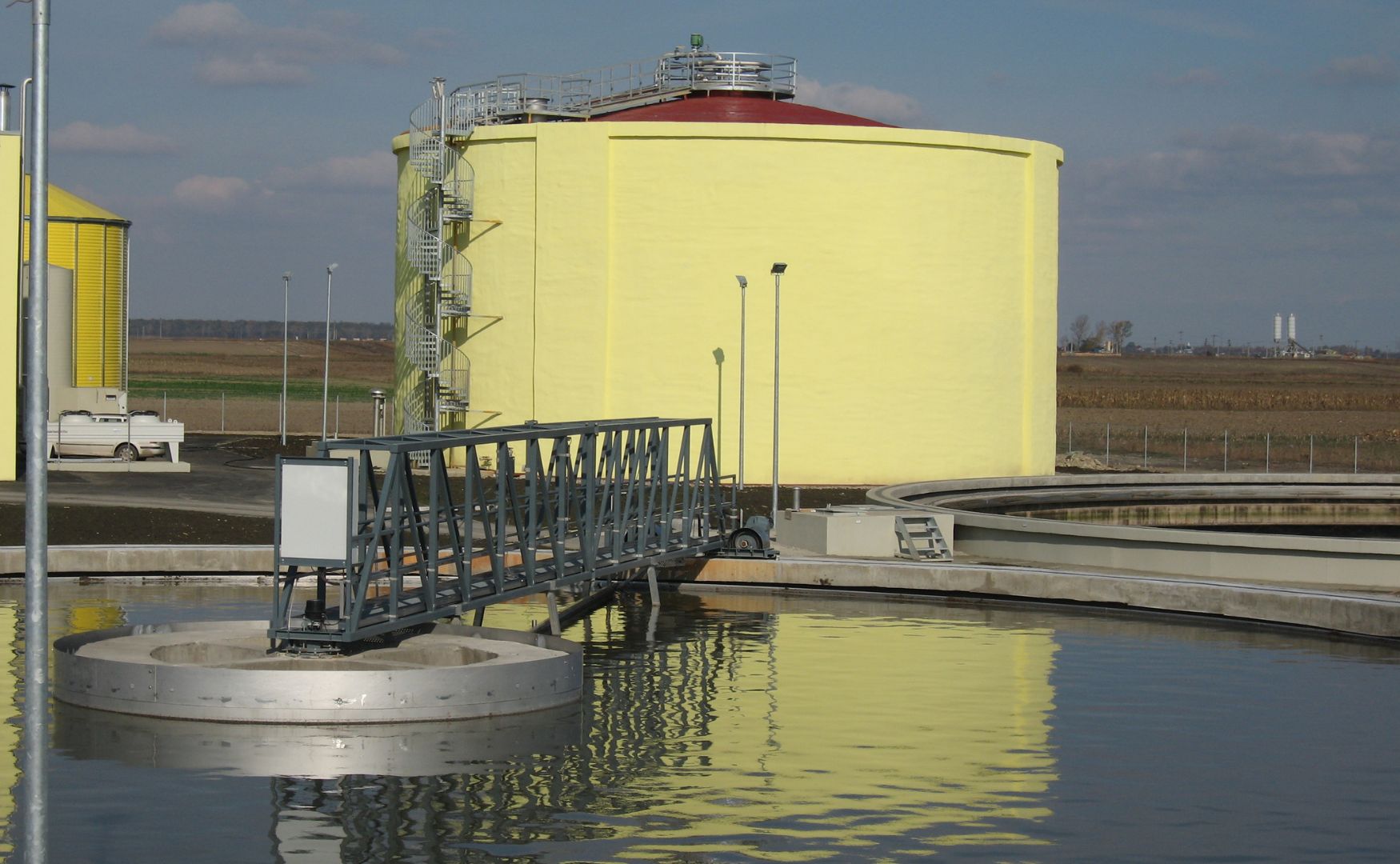
Photo: Our anaerobic biogas plant ALMA BHU GMR with sedimentation tank
2. chemical sludge stabilization
Chemical stabilization uses chemicals to inhibit microbiological degradation processes and to sanitize the sludge.
- Lime stabilization:
- Adding lime (CaO) or milk of lime (Ca(OH)₂) increases the pH value to > 12, which kills pathogenic microorganisms.
- Advantages:
- Rapid hygienization.
- Easy to use.
- Disadvantages:
- Increased solids content due to the addition of lime.
- High costs for chemicals.
- Oxidizing agent:
- Use of ozone or hydrogen peroxide (H₂O₂) to stabilize and minimize odours.
- Used primarily in industrial applications with specific requirements.
3. thermal sludge stabilization
Thermal stabilization uses heat to break down or disinfect the organic substances in the sludge.
- Thermal hydrolysis:
- The sludge is treated at temperatures of 150-200 °C and increased pressure (4-6 bar).
- Hydrolysis improves the dewaterability of the sludge and increases biogas production in subsequent anaerobic processes.
- Combustion:
- Direct thermal utilization of the sludge in waste incineration plants or special sludge incineration plants.
- In addition to energy generation, the ash is used as a raw material (e.g. phosphorus recycling).
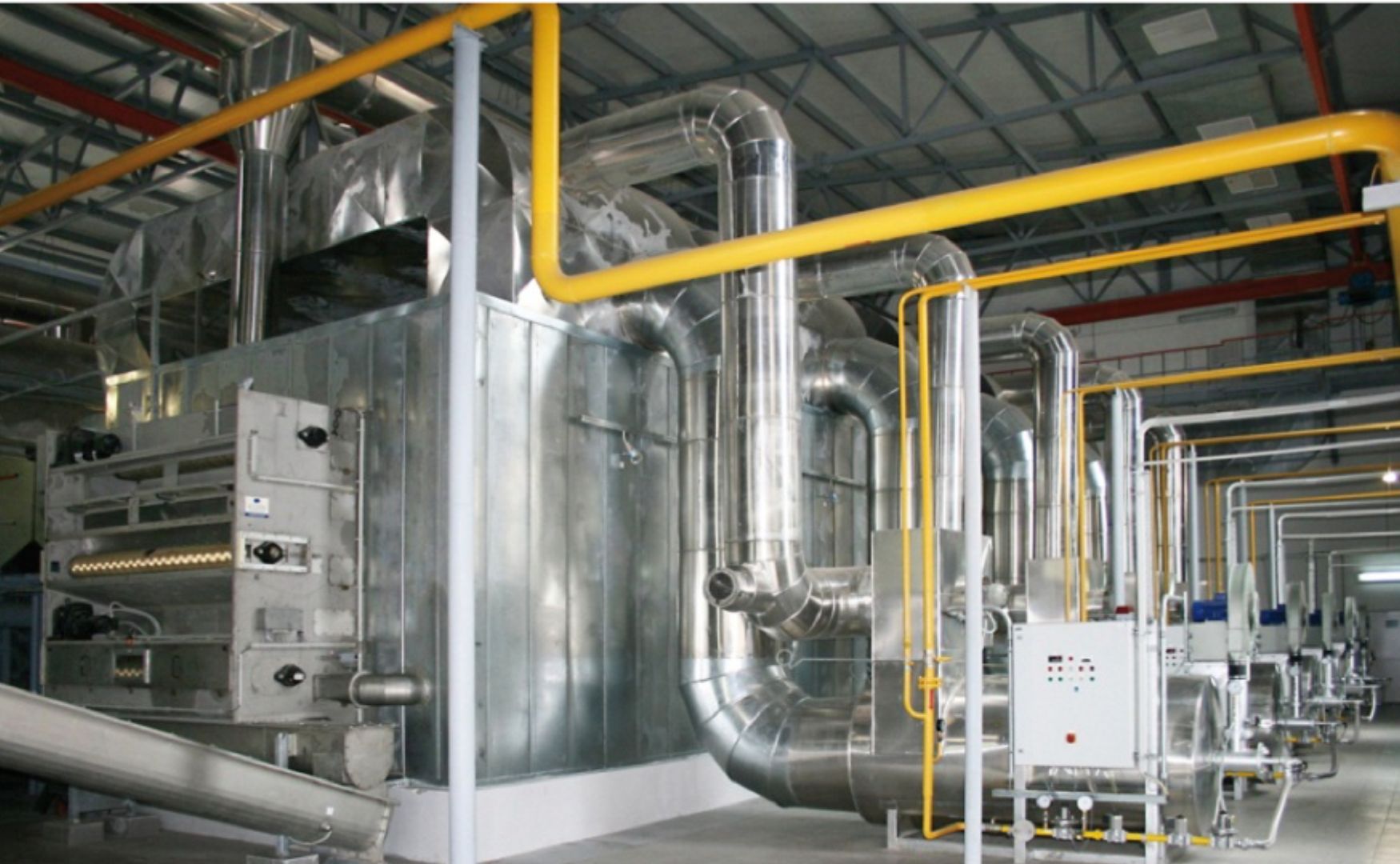
Photo: Thermal sludge stabilization with sludge recycling in the form of fertilizer granulates (process: ALMA BHU STR)
Factors influencing sludge stabilization
Mud consistency:
- The proportion of organic matter, the dry matter content and the composition of the sludge influence the choice and efficiency of the stabilization process.
Temperature:
- Temperature is particularly important for biological processes:
- Mesophilic conditions: 30-40 °C (standard in anaerobic digesters).
- Thermophilic conditions: 50-60 °C (higher degradation rate, but more energy-intensive).
- Temperature is particularly important for biological processes:
Load and volume:
- Plants with high sludge volumes benefit from energy-efficient processes such as anaerobic stabilization.
Operational requirements:
- Energy consumption, space requirements and investment costs are key criteria for selecting the process.
Advantages of sludge stabilization
Reduction of the organic content:
- Depending on the process, the organic content is reduced by 30-60 %, which reduces sludge volumes and disposal costs.
Energy generation:
- Anaerobic processes enable the production of biogas, which can be used to supply energy to the wastewater treatment plant.
Improved hygienization:
- Pathogenic microorganisms are reduced, which facilitates agricultural utilization.
Increase in drainability:
- Stabilized sludge is easier to dewater, which simplifies transport and further processing.
Conclusion
Sludge stabilization is an essential process in wastewater treatment that improves both operational safety and economic efficiency. It enables the reduction of sludge volumes, hygienization and the recovery of valuable resources such as biogas or phosphorus. Careful selection of the stabilization process, taking into account the sludge composition, operational requirements and legal regulations, is crucial for efficient and sustainable sludge treatment.
For further information on our products, please feel free to contact us at any time!


